What will happen if the Russian Soyuz spacecraft crash-lands in Ukraine? Yes, the chances of this happening are slim at least. But we should not forget that in the 20 months of Russia’s full-scale invasion, we have already witnessed a number of situations that were once considered absolutely impossible. However, they have come to pass.
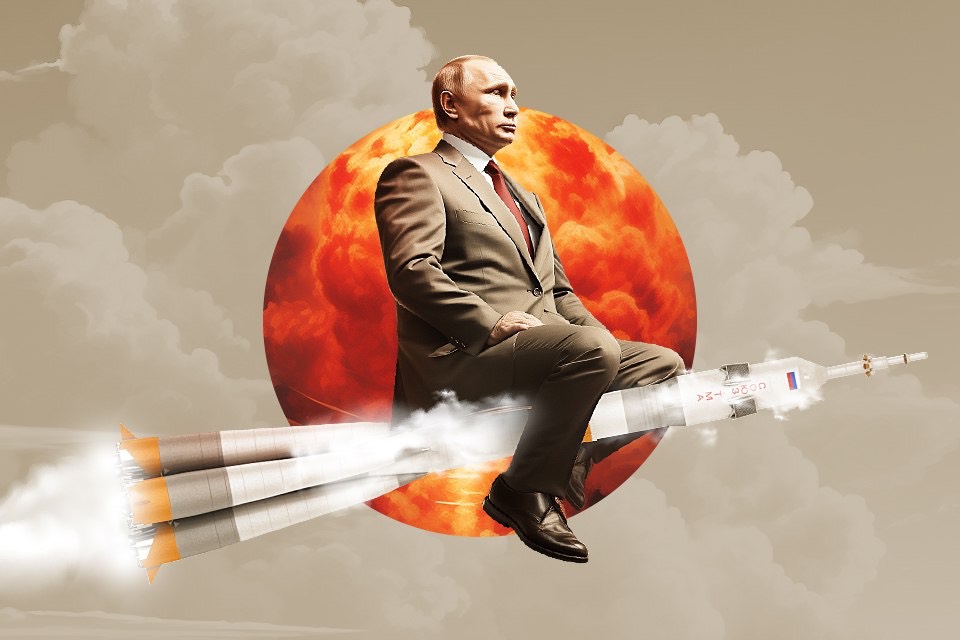
Just after we prepared this text, the German newspaper Bild reported on the recordings of Dmitry Rogozin’s talks with Dmitry Baranov, the CEO of the Progress rocket and space center. In early 2023, they discussed the technical details of organizing a strike on a major Ukrainian city using the Soyuz rocket, which is used for manned spaceflight.
This confirms that the scenario we have described deserves to be studied. Knowing how Russia operates and considering the intellectual level of its leadership, one should be prepared for any situation, no matter how crazy or unlikely it may seem. It really looks quite plausible that Roscosmos might mistakenly take a Soyuz spacecraft instead of Soyuz rocket and drop it on us together with astronauts.
Crash landings of the Cold War
It should be noted that in the history of world cosmonautics, there has never been a case when a spacecraft of a state at war landed on the territory of its enemy. At the same time, we should not forget that a significant part of the space age was marked by the Cold War, and, of course, the parties could not ignore this possibility. That is why some spacecraft were equipped with a self-destruct system to prevent them from falling into the wrong hands. In particular, this was the fate of Zond-4. After it became clear that its descent vehicle would land far from the planned area, it was blown up on the command of the Central Control Center.
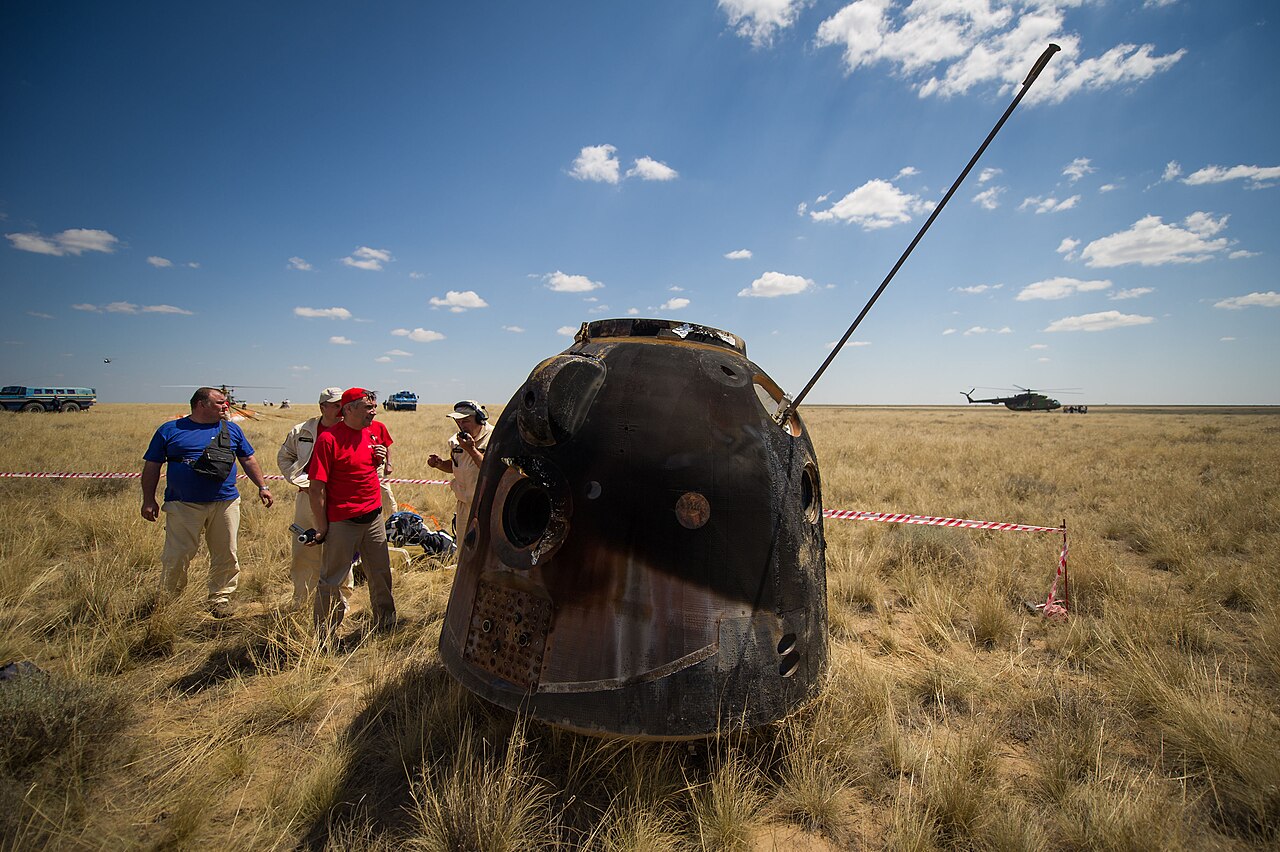
Of course, this scenario is not an option for manned missions. Therefore, their crews had some instructions in case of landing on the territory of a potential enemy. In particular, they were obliged to destroy classified documents and equipment.
This was the situation that arose in 1975. During the launch of the Soyuz-18 spacecraft, the rocket malfunctioned, causing it to fail to enter orbit and crash-land in the mountains. The crew of the ship did not know exactly where it was. But, based on the flight trajectory, the probability that the Soyuz had landed in China was quite high. That’s why the astronauts burned some documents. Later it turned out that the craft had actually landed 800 kilometers north of the border with China.
Another potentially delicate situation occurred with the Soyuz-33 spacecraft in 1979. It was supposed to dock with the Salyut-6 orbital station, but after entering orbit, its main power plant failed. As a result, it was decided to return to Earth. At the same time, if there was a need for an emergency landing, the ship would have to land in the United States. But in the end, it did not come to that, and Soyuz 33 returned to the USSR.
The fact that Soviet designers were seriously considering the possibility of the Soyuz landing abroad is indicated by the presence of instructions on how to open the lander, duplicated in English.
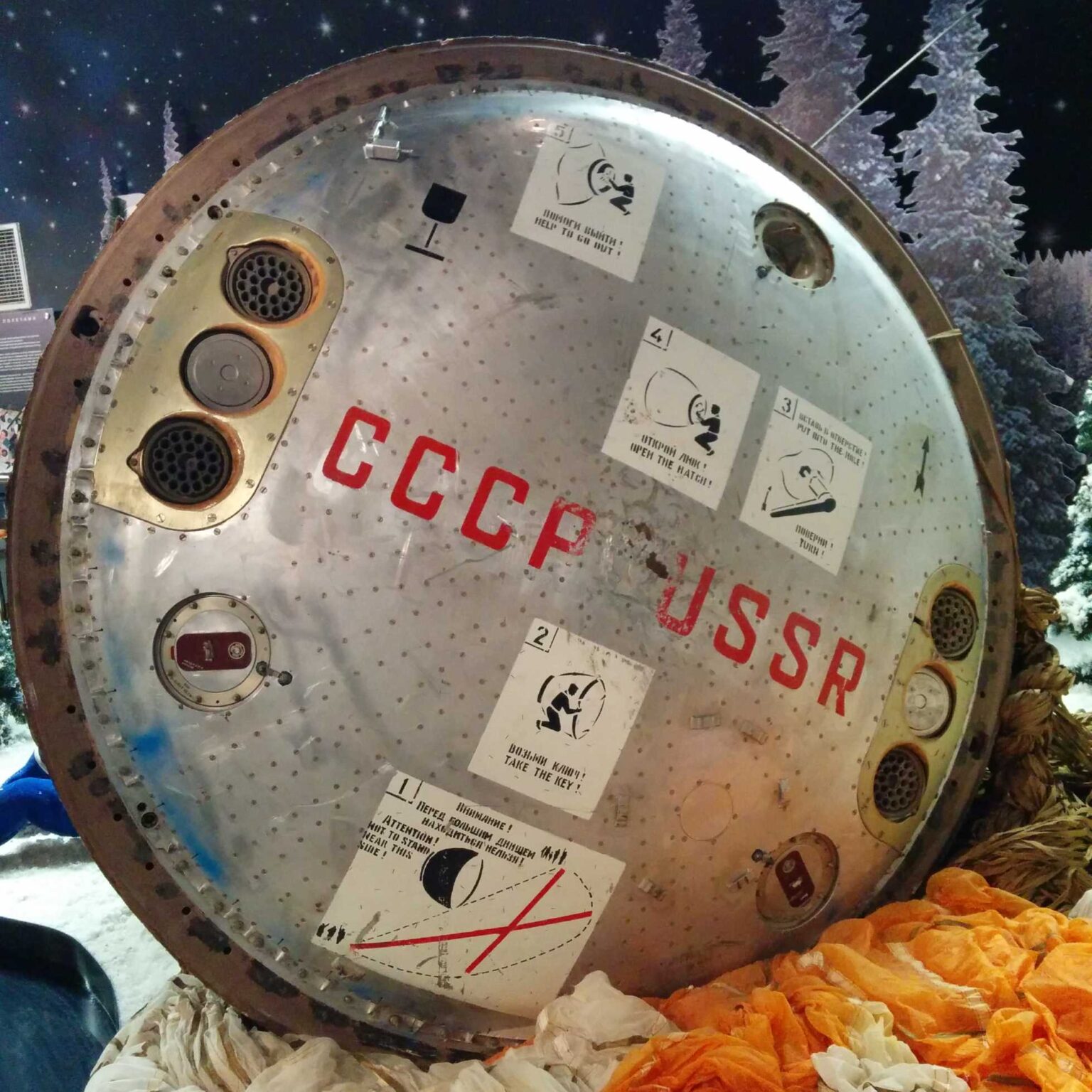
As for the United States, since the American capsule ships were splashing down in the ocean, the likelihood of their landing in a hostile country was much lower than in the case of the Soyuz. The situation with the shuttles was different. They landed on airfields like airplanes, but there were a number of requirements for the runway. In particular, it had to be at least 3 km long. Therefore, NASA had a network of prepared runways around the world that could accommodate a spacecraft, from Morocco to Easter Island, if necessary. But in the end, none of these foreign sites ever came in handy.
What lawyers say
In general, despite the complicated relations between the two opposing blocs during the Cold War, it is obvious that if a ship of one of the parties landed on the territory of the other, no one would arrest its crew. They would have been returned home together with their ship. Although the special services would certainly not have missed the opportunity to take a closer look at it.
However, we are not talking about a covert confrontation now. We are talking about a full-scale war in which the aggressor has long violated all possible norms and rules of behavior. And many Russian astronauts were former military pilots and have military ranks. Even those space explorers who had no direct connection to the army are actively used to justify aggression and propaganda. For example, we can recall the infamous case when in June last year Russian cosmonauts unfurled the “flags” of Russia-occupied territories on the ISS (the so-called “Donetsk Republic” and “Lugansk Republic”).
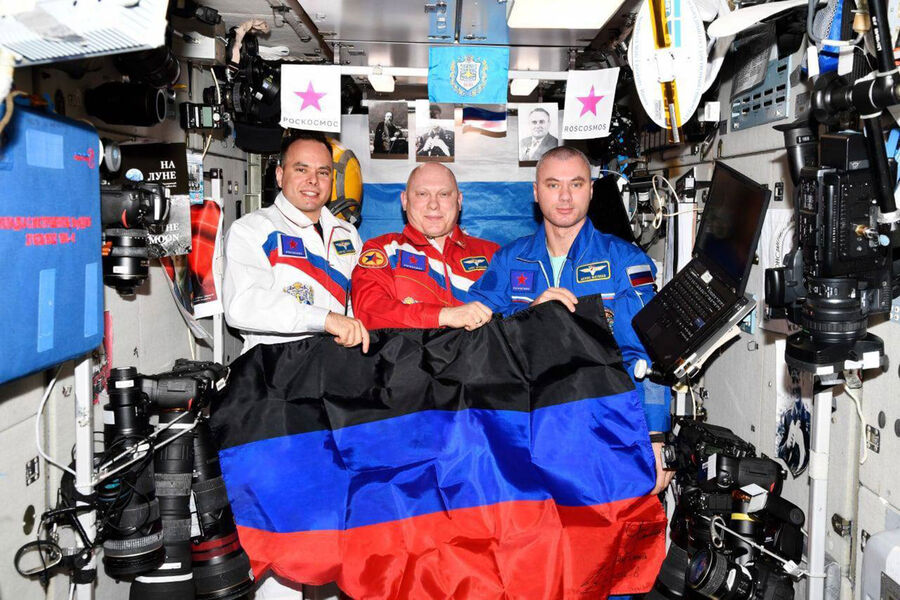
However, the legal aspect cannot be completely ignored. In this regard, we asked Anna Gurova, PhD in Law and an expert in space law, to comment on how such a situation should be regulated under existing international agreements.
According to Hanna Gurova, according to Article 5 of the Outer Space Treaty of 1967, astronauts are humanity’s envoys to space, which, in connection with the fundamental principle of peaceful exploration and use of space, determines their civilian status. In addition, the Agreement on the Rescue of Astronauts states that in the event that a spacecraft crew is found in the jurisdiction of another state, that state must:
- Inform the authorities of the country that launched the spacecraft (in this case, Russia) and the UN Secretary General.
- Immediately take all possible measures to rescue the crew and provide them with all necessary assistance.
- Return the crew to the state of their jurisdiction.
- At the request and with the assistance of the launching state, take such measures as it deems possible to rescue and then return the spacecraft or what remains of it.
However, there are two important nuances here:
First, the condition for the start of these processes is a spacecraft accident, the crew being in distress, or an involuntary or unintentional landing. Each of the above conditions can be proved and challenged. In a time of war, this situation necessitates an analysis of compliance with the principle of distinction (under international humanitarian law), i.e. whether the spacecraft is a civilian or military objective.
Secondly, our starting point will be that astronauts are envoys of all mankind, which determines their peaceful status. However, in 2001, Russia created space troops (in 2015, they became part of the Aerospace Forces). Some of the provisions of the decree on the creation of these troops have not been published. At the same time, Russian cosmonauts have access to state secrets in accordance with the regulation No. 551 of May 10, 2017.
At the same time, according to Article 50 of the First Additional Protocol to the Geneva Convention, in case of doubt as to whether a person is a civilian, he or she shall be presumed to be a civilian by default. Given certain provisions in this international document, as well as Article 4 of the Third Geneva Convention, which defines who can be a prisoner of war, the doubt will arise in any case.
At the same time, part 4A of Article 4 of the said Convention identifies the following categories of prisoners of war: crew members of merchant marine vessels and civilian aircraft of the parties to the conflict, unless they are subjected to more favorable treatment.
So the situation is as follows. In the event of a crash landing of a Russian spacecraft, Ukraine will, of course, take measures to rescue the astronauts. But this does not mean that they will automatically be immediately recognized as civilians and returned to their homeland along with their Soyuz. A review process will be launched. The result will be to establish the reason for the landing, the purpose pursued by the astronauts, and to determine their status. Until the process is completed, the astronauts will remain on Ukrainian territory.
What common people say
This was a lawyer’s opinion. But what about common people? The Universe Space Tech editorial team conducted a survey among the subscribers of our Facebook page and Telegram channel to find out their opinion.
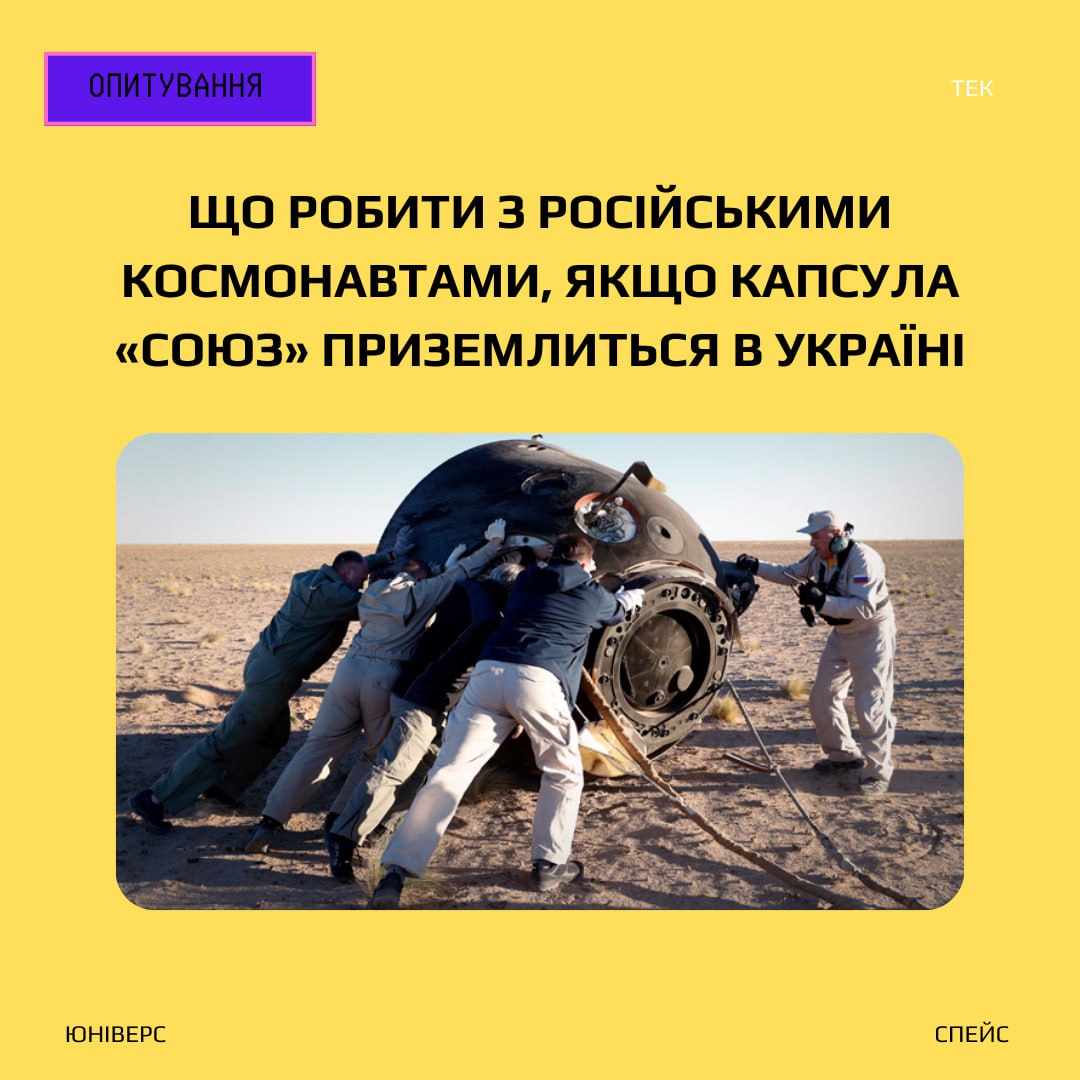
Predictably enough, most of our readers were against simply letting the Russian astronauts go. They believe that they should be exchanged for Ukrainian defenders.
Here are some of the comments we received:
- A capsule should be sent to the Museum of the History of Science and Technology (a department of the Lviv Historical Museum). Astronauts should go to the exchange fund of prisoners of war. (Taras Rak).
- Even if they are not military, they should be captured (at least for illegal border crossing), and then exchanged. (Pavlo Lahunov)
- Captured and exchanged for our heroes. (Katya Luchka)
- According to the current legislation. If military — to the exchange fund. (Viktor Zaslavsky)
- They are valuable exchange items! We should exchange them for all Azov soldiers at once! (George Gerasimyak)
But of course, some of our readers put forward much more radical proposals.
For example:
- We need to bring them home. Roll the capsule towards Russia, through Russian minefields. (Dmitry Gorchilin)
- Weld the hatches and send them back where they came from. (Cymargle)
- Get them on a tour around the liberated territories. (Igor Kikos)
- Weld all the holes and hatches as quick as possible! (Alexey Khodos)
- Consider them aliens. Then we will conduct various experiments on their brains. (Victor Vlad)
As we noted at the very beginning of the article, the likelihood that a Russian spacecraft will ever crash-land on Ukrainian territory is quite small. But if this does happen, it is obvious that this event will cause a very mixed reaction among the citizens of our country. International treaties can contain as many beautiful words about the messengers of humanity as you like. But the reality is that the war has completely destroyed the image of Russian cosmonauts as some kind of modern-day heroes… and their own actions never fit a beautiful image of some messenger of humanity.
Based on the above, we can conclude that once in Ukraine, Russian cosmonauts will not necessarily be recognized as civilians — especially if we consider above-mentioned Rogozin’s frank statements. Therefore, in order to avoid excesses, it is still better for them to avoid landing on our territory — unless, of course, they want to follow the example of pilot Maxim Kuzminov, who intentionally brought his Mi-8 helicopter to Ukraine. In this case, Russian cosmonauts will always be welcome here.
